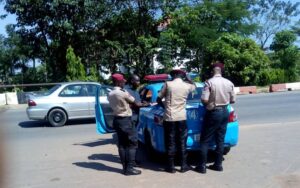Back to: English Language Primary 5
It’s sure exciting to have you in class today.
IDENTIFYING OF DIRECT AND INDIRECT SPEECH SENTENCES:
Direct Speech is when we write the actual words that someone says or has spoken.
To recognize direct speech, the speech marks go at the beginning and the end of the spoken words. (“ “)
Punctuation at the end of the spoken words goes before the speech marks.
When a different person speaks, we begin a new line.
Examples of Direct Speech:
“Could you tell me the way to the railway station?”, the lady asked.
“I’m sorry,” John replied, “but I don’t know. If you ask in the shop. I’m sure Mr. Fold will know.”
“Thank you very much. I’ll do that,” replied the lady.
“Have you been to Nigeria?” she asked.
Note that sometimes we split the spoken words so we have to be very careful about the punctuation.
E.g.
“Well,” said Tortoise, “you have never beaten me.”
Indirect Speech is when we are reporting or telling what someone has said. It is also called Reported Speech.
Note that Indirect speech doesn’t need speech marks. We also don’t use the exact spoken words.
Examples are:
A lady asked John if he could tell her the way to the railway station.
John said that he didn’t know. He suggested the lady go into the shop and ask Mr. Fold. He was sure he would know.
The lady thanked John and said she would ask in the shop.
She asked me if I had been to Nigeria.
COMPREHENSION:
SHIPWRECKED

Nothing can describe my confusion when I sunk into he water. Although I swam very well, I found it difficult to get my head above the water to breathe. A huge wave carried me forward and as it retreated, I found myself on dry land.
As I lay there, I could still taste the salty water I had swallowed. Before I could get up, another huge wave crashed over me. The water cried me further up the shore. I held my breath and began to swim forward.
Suddenly, I felt myself rising up. My head and hands shot out above the surface of the water and I took a deep breath.
But the waves were not finished with me yet. Again, I was covered with water and carried forward, but not so long this time. I felt ground beneath my feet. I stood still for a few moments to recover my breath and then took to my heels and what strength I had left, made for the shore.
I could not, however, run faster than the next wave which come after me. I was lifted up by the sea again, and this time the wave carried me at great speed towards a piece of rock.
The rock that nearly injured me was to be my salvation. I held on to it as the next wave crashed over me. When the wave retreated, I ran for the shore.
Nearer the shore, the next wave went over me but did not swallow me up. I ran again and this time, reached the bottom of the cliffs. With my remaining strength, I clambered up the cliffs and collapsed on the grass at the top.
At last, I was free from danger and out of the reach of the wild waves.
Adopted from Robinson Crusoe by Daniel Defoe.
QUIZ
Write true or false for each of these statements.
- Robinson Crusoe could not swim.
- He did not swallow any water.
- The waves carried him towards a rock.
- He clutched the rock to avoid being carried him towards a rock.
- The waves nearer the shore were bigger than those farther out.
- He did not make it to land.
VOCABULARY DEVELOPMENT
It’s time to learn new words and phrases.
Confusion… Muddled thinking.
Retreated… Went back
Not finished with me yet… Many other things happened to me.
Took to my heels… Ran
Salvation… The thing that saved me.
Clambered… Climbed with difficulty.
WRITING:
Narrative Composition:
“The day I met the Federal Road Safety Corps Officials on the road”

It was the morning of Christmas Eve; my Mum and I went shopping for Christmas. We were going to have a party on Christmas and so had a lot to do and cook.
We went from stores to malls, from malls to local markets. The local market was the last location. We were headed home when Mum’s car, a Mercedez C180 painted navy blue broke down in the middle of the CMD Road. Mum got down and opened the Bonnet to check a number of things while I watched from the side mirror.
I saw a few men some kilometres ahead. They were dressed in light brown short-sleeved shirts and black trousers. They had big black belts strapped on and wore black leather shoes or boots. They finished their look with wine face caps. I could see from a distance that the caps and shirts had a kind of logo attached to them. After a while, two of them moved closer to us and asked Mum what was wrong with car. She said a few things to them, they checked and helped out.
Alas, there was nothing major wrong with the car. After some minutes, we sped off. The moment Mum got behind the wheels, I asked her, “who were those men?” Mum replied, “They are officials of the Federal Road Safety Corps.” “So, what do they do?” “They are the government agency responsible for road safety administration in Nigeria.”
That was the day I met the Federal Road Safety Corps officials in Nigeria. It was memorable because they helped us fix our car and I also got to learn about them.
